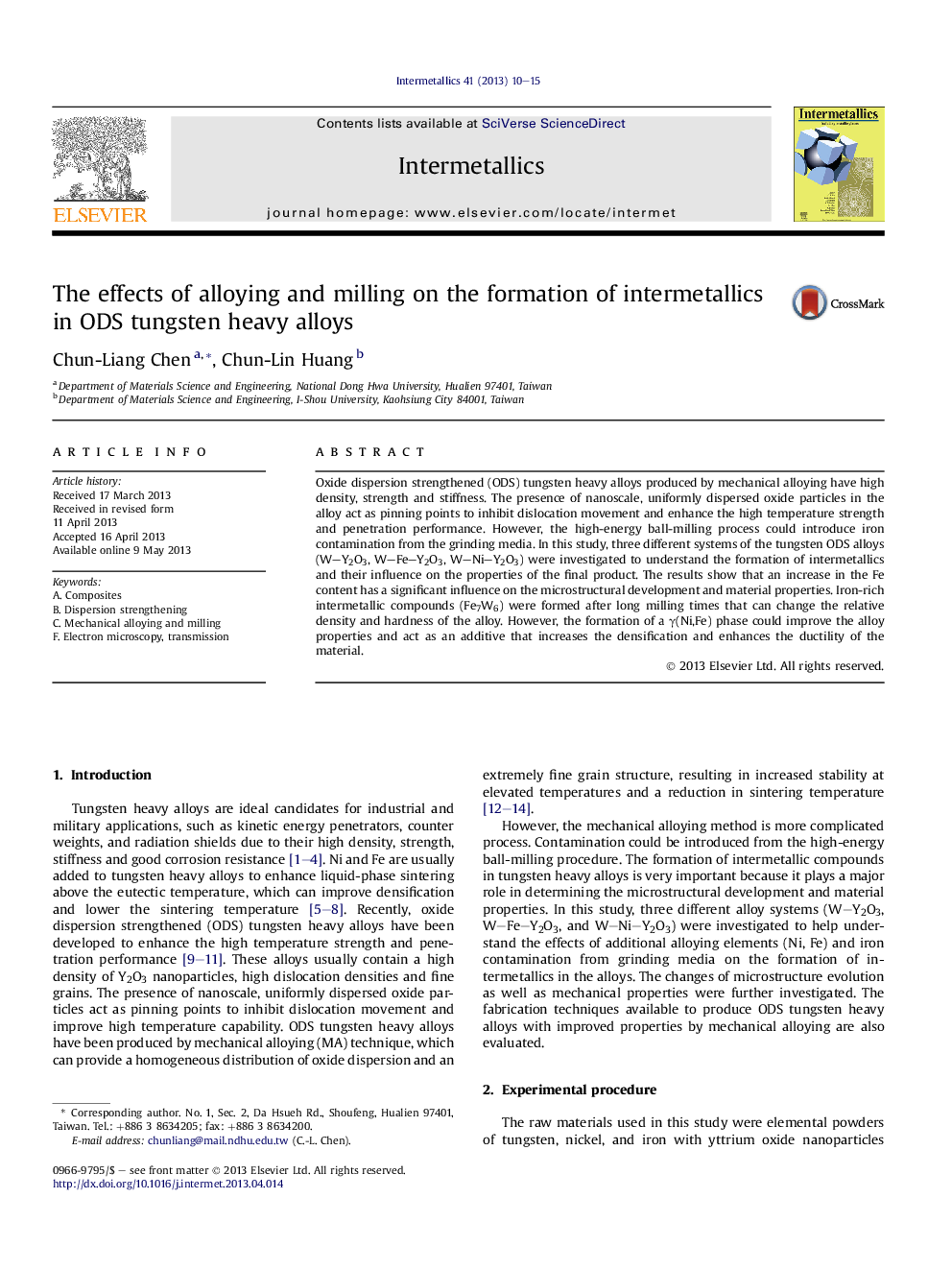| Article ID | Journal | Published Year | Pages | File Type |
|---|---|---|---|---|
| 1600160 | Intermetallics | 2013 | 6 Pages |
•A novel study of the effects of alloying and milling on ODS tungsten alloys.•Fe contamination was found during MA process due to grinding media.•Excess Fe can form Fe7W6, resulting in embrittlement and porosity.•γ(Ni,Fe) acts as a strong binder phase, providing high density and ductility.•The fabrication techniques with improved properties by MA process are evaluated.
Oxide dispersion strengthened (ODS) tungsten heavy alloys produced by mechanical alloying have high density, strength and stiffness. The presence of nanoscale, uniformly dispersed oxide particles in the alloy act as pinning points to inhibit dislocation movement and enhance the high temperature strength and penetration performance. However, the high-energy ball-milling process could introduce iron contamination from the grinding media. In this study, three different systems of the tungsten ODS alloys (W–Y2O3, W–Fe–Y2O3, W–Ni–Y2O3) were investigated to understand the formation of intermetallics and their influence on the properties of the final product. The results show that an increase in the Fe content has a significant influence on the microstructural development and material properties. Iron-rich intermetallic compounds (Fe7W6) were formed after long milling times that can change the relative density and hardness of the alloy. However, the formation of a γ(Ni,Fe) phase could improve the alloy properties and act as an additive that increases the densification and enhances the ductility of the material.
